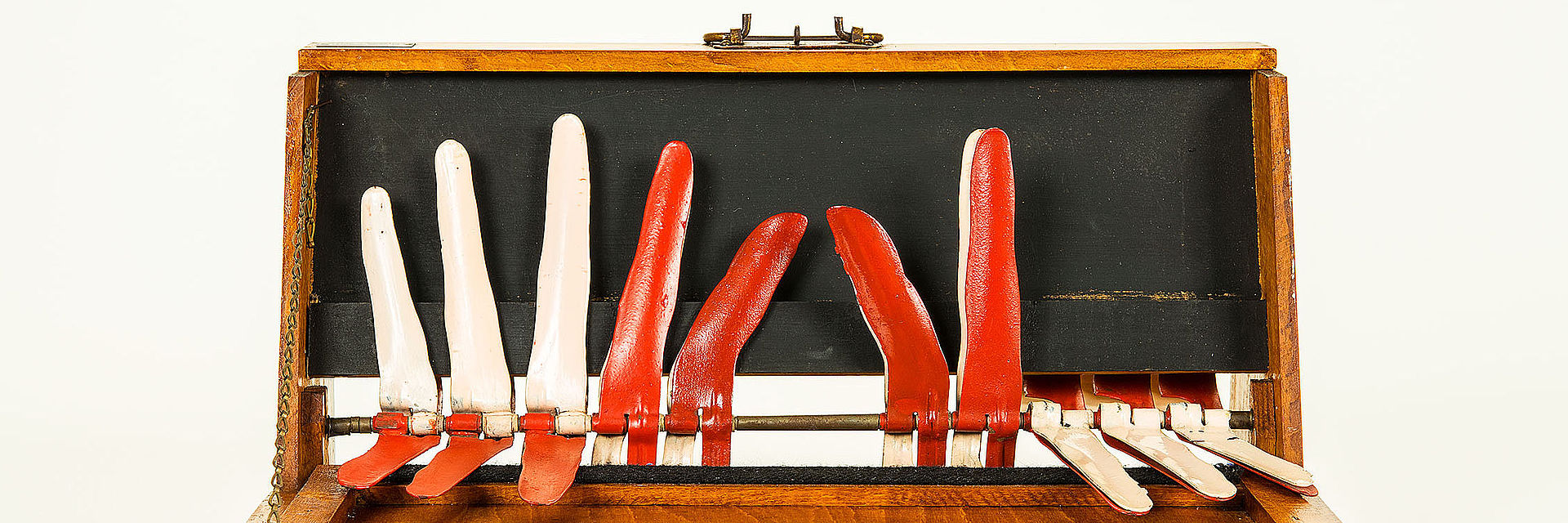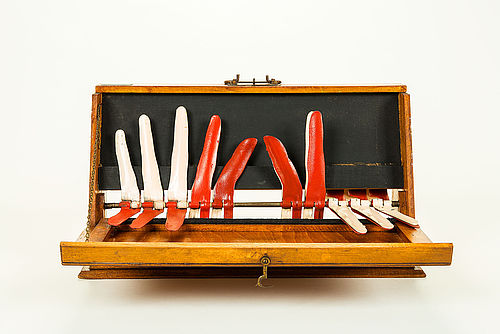
Fingers Calculator, 1920s
Object of the month August 2021

SDTB / Foto: C. Kirchner
Most six-year-old children are very excited right now: They are entering the first grade and will soon learn reading, writing and arithmetic. Which methods for teaching writing and basic math were best was already a matter of heated debate a hundred years ago.
At that time the use of fingers when adding or subtracting was frowned upon in school. It was seen as a hindrance to the development of more abstract arithmetic skills. In everyday life, however, finger arithmetic was in fact widespread and was given even further impetus as a result of the educational reform ideas of the Weimar Republic. The elementary school teacher Wilhelm Wlecke from Gütersloh developed a finger-calculating device that was used as a teaching aid in arithmetic classes in the 1920s. Wlecke was convinced that students are only able to understand things that had “previously existed in the senses”. It was his opinion that children with learning difficulties in arithmetic would particularly benefit from calculating with their fingers. His apparatus was to be used as a visual representation of that method in the classroom.
He thus constructed a wooden case with red and white metal fingers which could be placed on the teacher's desk. Thanks to the differently colored hinged fingers that could be moved forward individually, the class was able to keep track of and imitate the individual calculation steps.
Recent studies also point to the advantages of finger arithmetic: physicality and visualization support the understanding of the abstract processes. However, it is emphasized that students should get past mere finger counting in the course of the first grade and that the fingers should just be used to give the children a better mental picture of the quantities represented by numbers.
